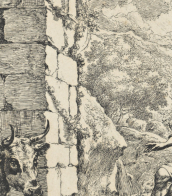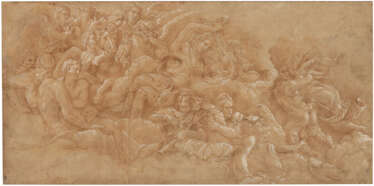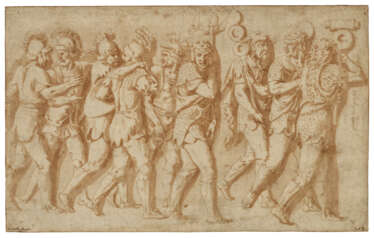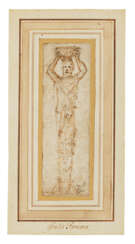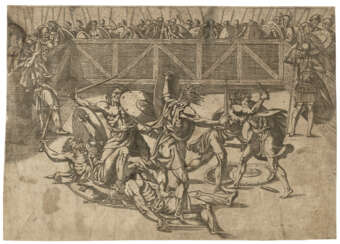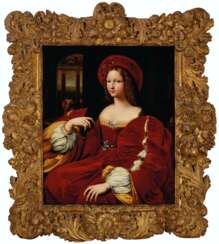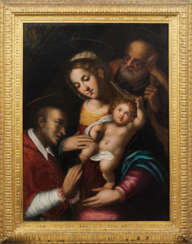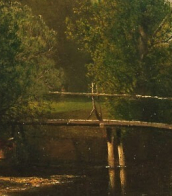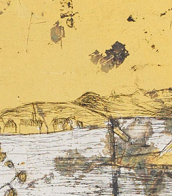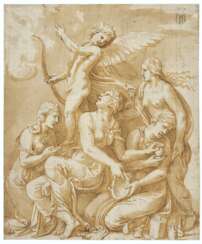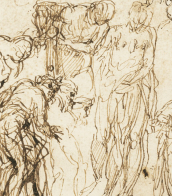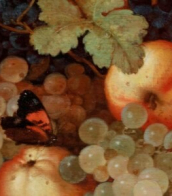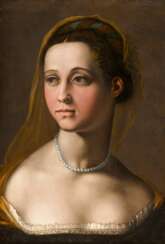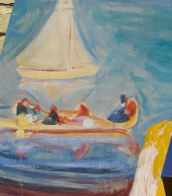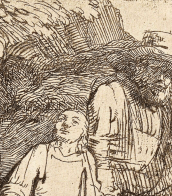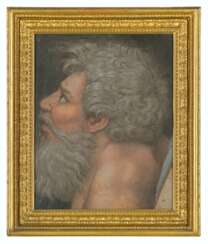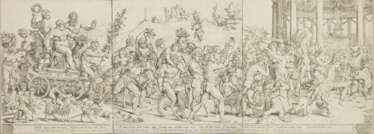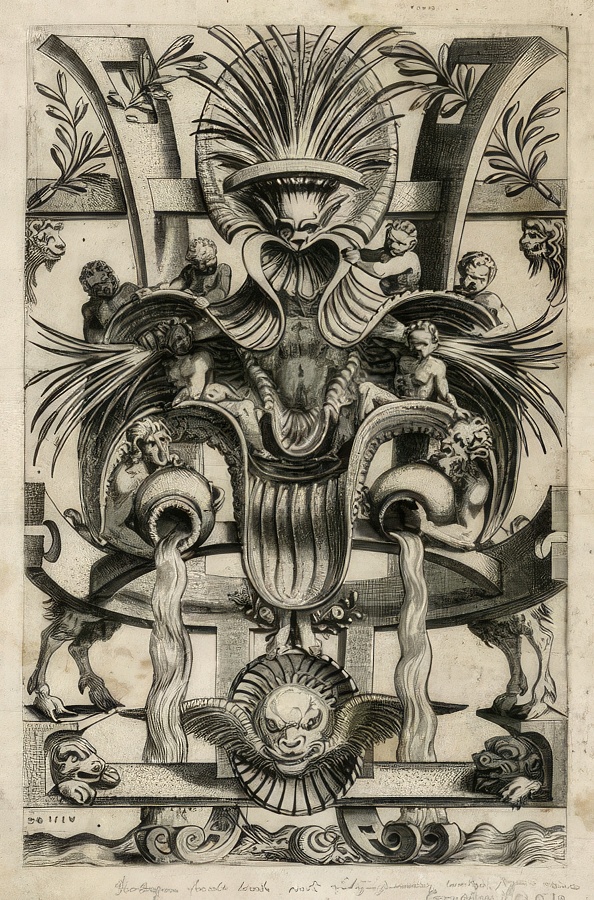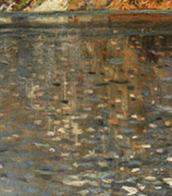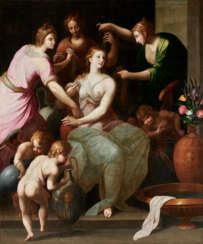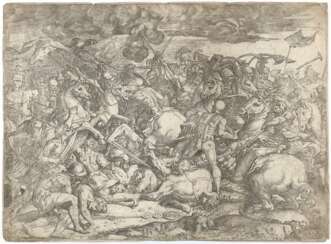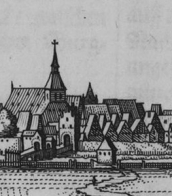giulio romano (1499 - 1546)
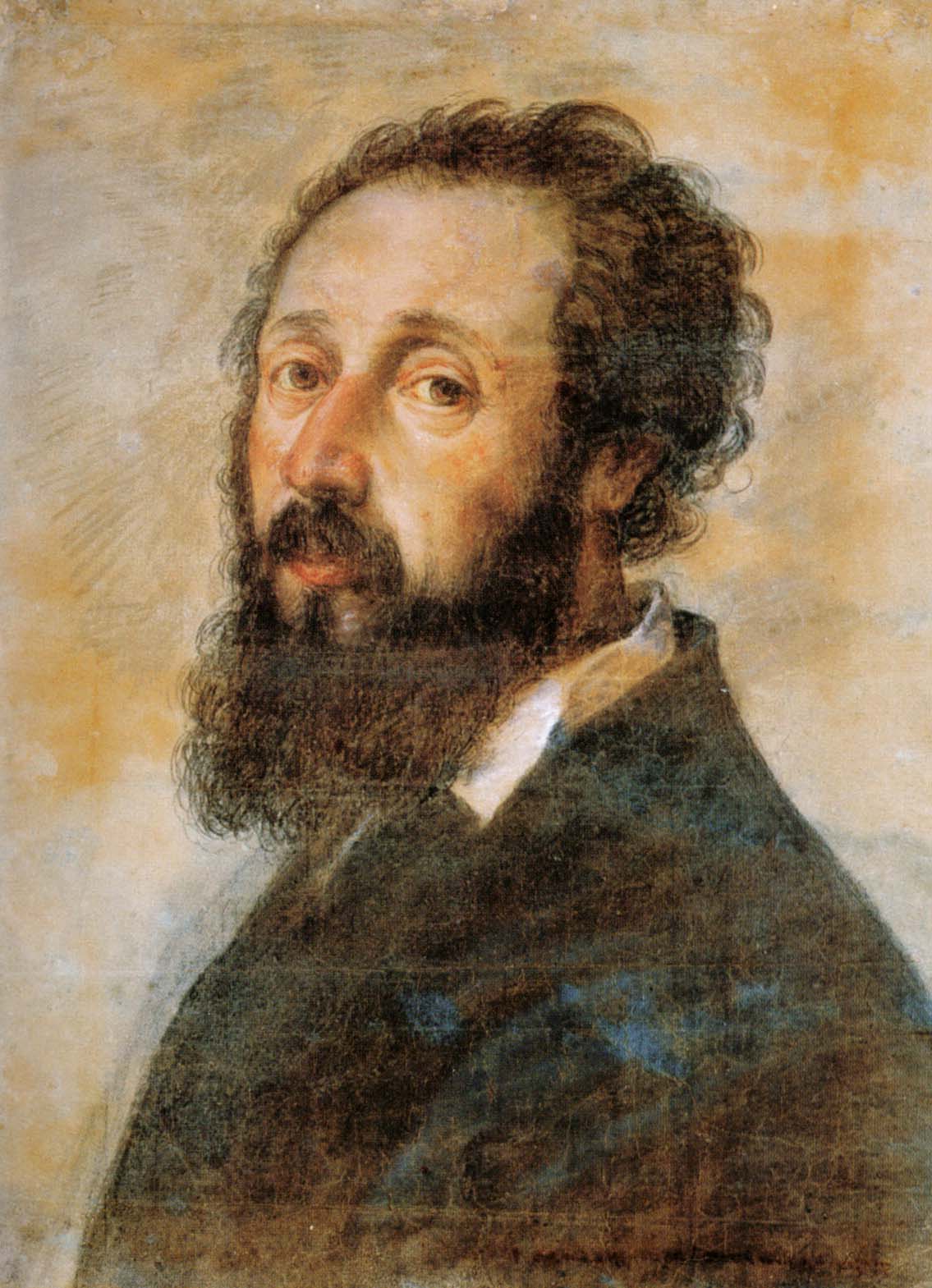
Giulio Romano, an Italian prodigy in painting and architecture, is celebrated for his dynamic contributions to the Renaissance and Mannerist styles. A pivotal figure in the late Renaissance, Giulio Romano was not only Raphael's principal pupil but also a trusted assistant, inheriting his master's workshop upon his death in 1520.
Giulio Romano's artistic journey began under Raphael's tutelage, where he honed his skills in both painting and architecture. His work vividly reflects the essence of the High Renaissance yet also signals the advent of Mannerism, a style characterized by elongated forms and exaggerated emotions. Notably, Romano's architectural prowess was largely self-taught, developed while assisting Raphael, who was the papal architect during that time.
The Palazzo del Te in Mantua stands as a testament to Giulio Romano's architectural genius. This pleasure palace, begun around 1524 and completed a decade later, showcases his inventive spirit and skill. It's a striking example of how Romano played with classical conventions to create something uniquely expressive. His ability to transform spaces was not just limited to grand structures but also extended to designing gardens and facades, enhancing their aesthetics and functionality.
In painting, Giulio Romano's works such as the Stoning of St. Stephen in Santo Stefano, Genoa, and the Adoration of the Magi in the Louvre, demonstrate his mastery and influence. His fresco "Fire in the Borgo" in the Raphael Rooms of the Vatican City is particularly noteworthy. Romano's drawings and designs, revered for their technical skill and creativity, significantly influenced subsequent artists, including Nicolas Poussin.
For art collectors and experts, the works of Giulio Romano present a fascinating blend of Renaissance classicism and the burgeoning Mannerist style. His contributions in both painting and architecture have left an indelible mark on the history of art and culture.
For those interested in staying updated on sales and auction events related to Giulio Romano, consider signing up for updates. This subscription is strictly for alerts on new product sales and auction events relevant to Romano's works. Avoid missing out on acquiring a piece of this Renaissance master's legacy.
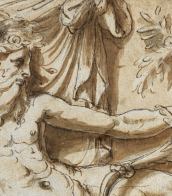
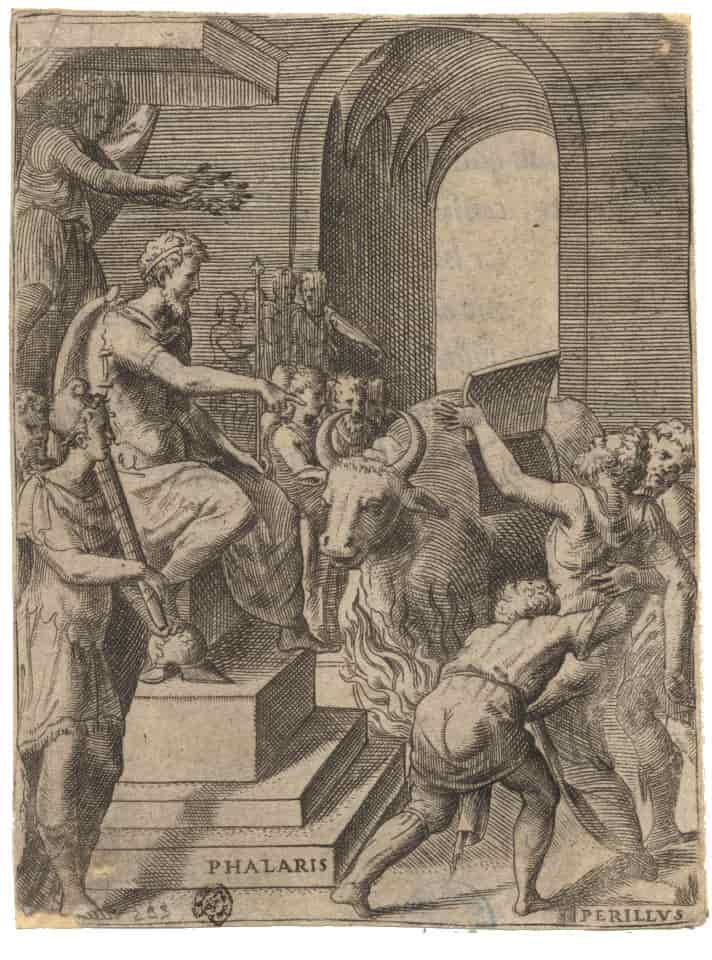
Giulio Antonio Bonasone was an Italian painter and engraver born in Bologna. He possibly studied painting under Lorenzo Sabbatini, and painted a Purgatory for the church of San Stefano, but all his paintings have been lost. He is better known as an engraver and is believed to have trained with Marcantonio Raimondi. He worked mainly in Mantua, Rome and Venice and with great success, producing etchings and engravings after the old masters and his own designs.
He has been regarded an engraver with extraordinary skills in reproducing, as he could accurately convey the sources' compositions, colours, and essence. Moreover, he expressed his understanding about the controversies about religion and culture in his time through his prints. He is considered among the most important and productive engravers of the sixteenth century.
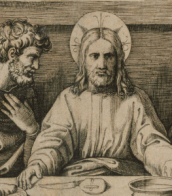

Giulio Romano, an Italian prodigy in painting and architecture, is celebrated for his dynamic contributions to the Renaissance and Mannerist styles. A pivotal figure in the late Renaissance, Giulio Romano was not only Raphael's principal pupil but also a trusted assistant, inheriting his master's workshop upon his death in 1520.
Giulio Romano's artistic journey began under Raphael's tutelage, where he honed his skills in both painting and architecture. His work vividly reflects the essence of the High Renaissance yet also signals the advent of Mannerism, a style characterized by elongated forms and exaggerated emotions. Notably, Romano's architectural prowess was largely self-taught, developed while assisting Raphael, who was the papal architect during that time.
The Palazzo del Te in Mantua stands as a testament to Giulio Romano's architectural genius. This pleasure palace, begun around 1524 and completed a decade later, showcases his inventive spirit and skill. It's a striking example of how Romano played with classical conventions to create something uniquely expressive. His ability to transform spaces was not just limited to grand structures but also extended to designing gardens and facades, enhancing their aesthetics and functionality.
In painting, Giulio Romano's works such as the Stoning of St. Stephen in Santo Stefano, Genoa, and the Adoration of the Magi in the Louvre, demonstrate his mastery and influence. His fresco "Fire in the Borgo" in the Raphael Rooms of the Vatican City is particularly noteworthy. Romano's drawings and designs, revered for their technical skill and creativity, significantly influenced subsequent artists, including Nicolas Poussin.
For art collectors and experts, the works of Giulio Romano present a fascinating blend of Renaissance classicism and the burgeoning Mannerist style. His contributions in both painting and architecture have left an indelible mark on the history of art and culture.
For those interested in staying updated on sales and auction events related to Giulio Romano, consider signing up for updates. This subscription is strictly for alerts on new product sales and auction events relevant to Romano's works. Avoid missing out on acquiring a piece of this Renaissance master's legacy.
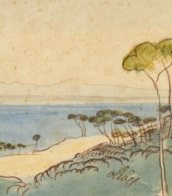

Giulio Romano, an Italian prodigy in painting and architecture, is celebrated for his dynamic contributions to the Renaissance and Mannerist styles. A pivotal figure in the late Renaissance, Giulio Romano was not only Raphael's principal pupil but also a trusted assistant, inheriting his master's workshop upon his death in 1520.
Giulio Romano's artistic journey began under Raphael's tutelage, where he honed his skills in both painting and architecture. His work vividly reflects the essence of the High Renaissance yet also signals the advent of Mannerism, a style characterized by elongated forms and exaggerated emotions. Notably, Romano's architectural prowess was largely self-taught, developed while assisting Raphael, who was the papal architect during that time.
The Palazzo del Te in Mantua stands as a testament to Giulio Romano's architectural genius. This pleasure palace, begun around 1524 and completed a decade later, showcases his inventive spirit and skill. It's a striking example of how Romano played with classical conventions to create something uniquely expressive. His ability to transform spaces was not just limited to grand structures but also extended to designing gardens and facades, enhancing their aesthetics and functionality.
In painting, Giulio Romano's works such as the Stoning of St. Stephen in Santo Stefano, Genoa, and the Adoration of the Magi in the Louvre, demonstrate his mastery and influence. His fresco "Fire in the Borgo" in the Raphael Rooms of the Vatican City is particularly noteworthy. Romano's drawings and designs, revered for their technical skill and creativity, significantly influenced subsequent artists, including Nicolas Poussin.
For art collectors and experts, the works of Giulio Romano present a fascinating blend of Renaissance classicism and the burgeoning Mannerist style. His contributions in both painting and architecture have left an indelible mark on the history of art and culture.
For those interested in staying updated on sales and auction events related to Giulio Romano, consider signing up for updates. This subscription is strictly for alerts on new product sales and auction events relevant to Romano's works. Avoid missing out on acquiring a piece of this Renaissance master's legacy.


Giulio Romano, an Italian prodigy in painting and architecture, is celebrated for his dynamic contributions to the Renaissance and Mannerist styles. A pivotal figure in the late Renaissance, Giulio Romano was not only Raphael's principal pupil but also a trusted assistant, inheriting his master's workshop upon his death in 1520.
Giulio Romano's artistic journey began under Raphael's tutelage, where he honed his skills in both painting and architecture. His work vividly reflects the essence of the High Renaissance yet also signals the advent of Mannerism, a style characterized by elongated forms and exaggerated emotions. Notably, Romano's architectural prowess was largely self-taught, developed while assisting Raphael, who was the papal architect during that time.
The Palazzo del Te in Mantua stands as a testament to Giulio Romano's architectural genius. This pleasure palace, begun around 1524 and completed a decade later, showcases his inventive spirit and skill. It's a striking example of how Romano played with classical conventions to create something uniquely expressive. His ability to transform spaces was not just limited to grand structures but also extended to designing gardens and facades, enhancing their aesthetics and functionality.
In painting, Giulio Romano's works such as the Stoning of St. Stephen in Santo Stefano, Genoa, and the Adoration of the Magi in the Louvre, demonstrate his mastery and influence. His fresco "Fire in the Borgo" in the Raphael Rooms of the Vatican City is particularly noteworthy. Romano's drawings and designs, revered for their technical skill and creativity, significantly influenced subsequent artists, including Nicolas Poussin.
For art collectors and experts, the works of Giulio Romano present a fascinating blend of Renaissance classicism and the burgeoning Mannerist style. His contributions in both painting and architecture have left an indelible mark on the history of art and culture.
For those interested in staying updated on sales and auction events related to Giulio Romano, consider signing up for updates. This subscription is strictly for alerts on new product sales and auction events relevant to Romano's works. Avoid missing out on acquiring a piece of this Renaissance master's legacy.
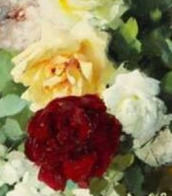

Giulio Romano, an Italian prodigy in painting and architecture, is celebrated for his dynamic contributions to the Renaissance and Mannerist styles. A pivotal figure in the late Renaissance, Giulio Romano was not only Raphael's principal pupil but also a trusted assistant, inheriting his master's workshop upon his death in 1520.
Giulio Romano's artistic journey began under Raphael's tutelage, where he honed his skills in both painting and architecture. His work vividly reflects the essence of the High Renaissance yet also signals the advent of Mannerism, a style characterized by elongated forms and exaggerated emotions. Notably, Romano's architectural prowess was largely self-taught, developed while assisting Raphael, who was the papal architect during that time.
The Palazzo del Te in Mantua stands as a testament to Giulio Romano's architectural genius. This pleasure palace, begun around 1524 and completed a decade later, showcases his inventive spirit and skill. It's a striking example of how Romano played with classical conventions to create something uniquely expressive. His ability to transform spaces was not just limited to grand structures but also extended to designing gardens and facades, enhancing their aesthetics and functionality.
In painting, Giulio Romano's works such as the Stoning of St. Stephen in Santo Stefano, Genoa, and the Adoration of the Magi in the Louvre, demonstrate his mastery and influence. His fresco "Fire in the Borgo" in the Raphael Rooms of the Vatican City is particularly noteworthy. Romano's drawings and designs, revered for their technical skill and creativity, significantly influenced subsequent artists, including Nicolas Poussin.
For art collectors and experts, the works of Giulio Romano present a fascinating blend of Renaissance classicism and the burgeoning Mannerist style. His contributions in both painting and architecture have left an indelible mark on the history of art and culture.
For those interested in staying updated on sales and auction events related to Giulio Romano, consider signing up for updates. This subscription is strictly for alerts on new product sales and auction events relevant to Romano's works. Avoid missing out on acquiring a piece of this Renaissance master's legacy.
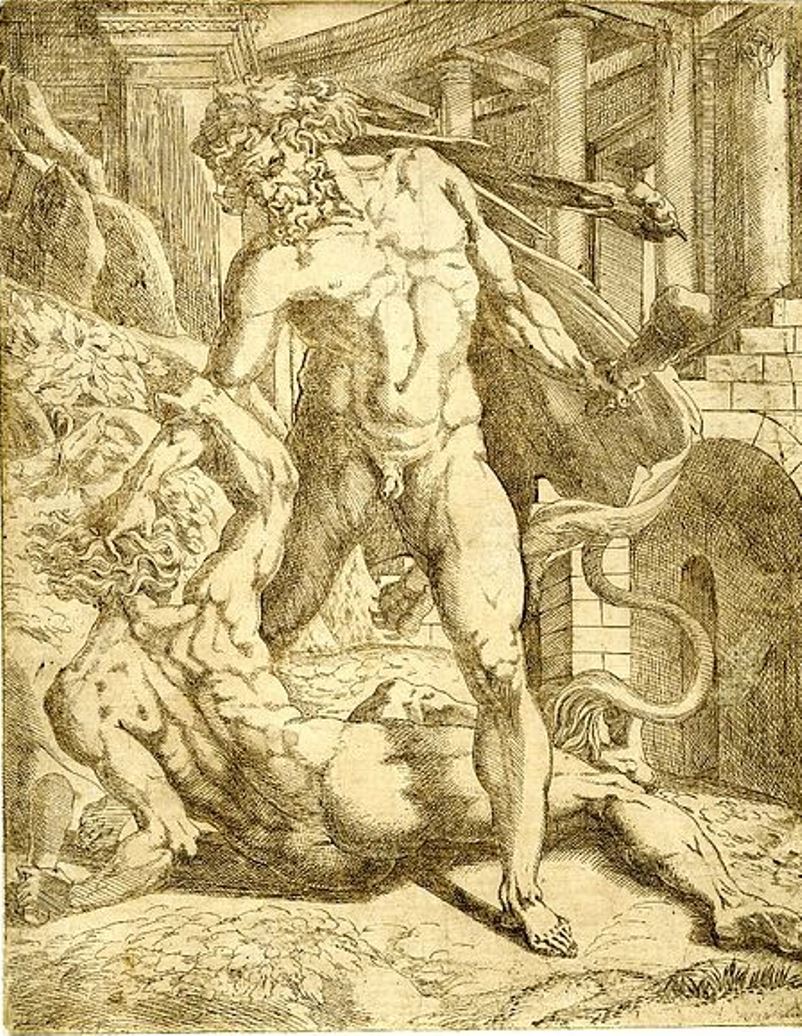
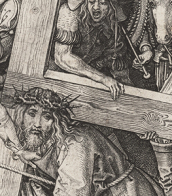

Giulio Romano, an Italian prodigy in painting and architecture, is celebrated for his dynamic contributions to the Renaissance and Mannerist styles. A pivotal figure in the late Renaissance, Giulio Romano was not only Raphael's principal pupil but also a trusted assistant, inheriting his master's workshop upon his death in 1520.
Giulio Romano's artistic journey began under Raphael's tutelage, where he honed his skills in both painting and architecture. His work vividly reflects the essence of the High Renaissance yet also signals the advent of Mannerism, a style characterized by elongated forms and exaggerated emotions. Notably, Romano's architectural prowess was largely self-taught, developed while assisting Raphael, who was the papal architect during that time.
The Palazzo del Te in Mantua stands as a testament to Giulio Romano's architectural genius. This pleasure palace, begun around 1524 and completed a decade later, showcases his inventive spirit and skill. It's a striking example of how Romano played with classical conventions to create something uniquely expressive. His ability to transform spaces was not just limited to grand structures but also extended to designing gardens and facades, enhancing their aesthetics and functionality.
In painting, Giulio Romano's works such as the Stoning of St. Stephen in Santo Stefano, Genoa, and the Adoration of the Magi in the Louvre, demonstrate his mastery and influence. His fresco "Fire in the Borgo" in the Raphael Rooms of the Vatican City is particularly noteworthy. Romano's drawings and designs, revered for their technical skill and creativity, significantly influenced subsequent artists, including Nicolas Poussin.
For art collectors and experts, the works of Giulio Romano present a fascinating blend of Renaissance classicism and the burgeoning Mannerist style. His contributions in both painting and architecture have left an indelible mark on the history of art and culture.
For those interested in staying updated on sales and auction events related to Giulio Romano, consider signing up for updates. This subscription is strictly for alerts on new product sales and auction events relevant to Romano's works. Avoid missing out on acquiring a piece of this Renaissance master's legacy.
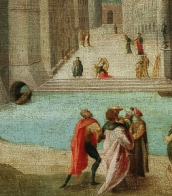

Giulio Romano, an Italian prodigy in painting and architecture, is celebrated for his dynamic contributions to the Renaissance and Mannerist styles. A pivotal figure in the late Renaissance, Giulio Romano was not only Raphael's principal pupil but also a trusted assistant, inheriting his master's workshop upon his death in 1520.
Giulio Romano's artistic journey began under Raphael's tutelage, where he honed his skills in both painting and architecture. His work vividly reflects the essence of the High Renaissance yet also signals the advent of Mannerism, a style characterized by elongated forms and exaggerated emotions. Notably, Romano's architectural prowess was largely self-taught, developed while assisting Raphael, who was the papal architect during that time.
The Palazzo del Te in Mantua stands as a testament to Giulio Romano's architectural genius. This pleasure palace, begun around 1524 and completed a decade later, showcases his inventive spirit and skill. It's a striking example of how Romano played with classical conventions to create something uniquely expressive. His ability to transform spaces was not just limited to grand structures but also extended to designing gardens and facades, enhancing their aesthetics and functionality.
In painting, Giulio Romano's works such as the Stoning of St. Stephen in Santo Stefano, Genoa, and the Adoration of the Magi in the Louvre, demonstrate his mastery and influence. His fresco "Fire in the Borgo" in the Raphael Rooms of the Vatican City is particularly noteworthy. Romano's drawings and designs, revered for their technical skill and creativity, significantly influenced subsequent artists, including Nicolas Poussin.
For art collectors and experts, the works of Giulio Romano present a fascinating blend of Renaissance classicism and the burgeoning Mannerist style. His contributions in both painting and architecture have left an indelible mark on the history of art and culture.
For those interested in staying updated on sales and auction events related to Giulio Romano, consider signing up for updates. This subscription is strictly for alerts on new product sales and auction events relevant to Romano's works. Avoid missing out on acquiring a piece of this Renaissance master's legacy.
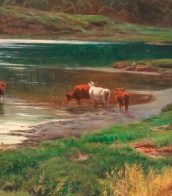

Giorgio Ghisi was an Italian engraver from Mantova who also worked in Antwerp and France. He made both engravings and damascened metalwork, although only two surviving examples of the latter are known.







